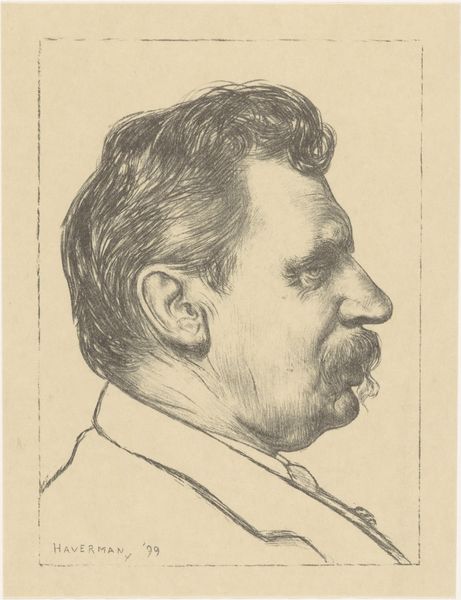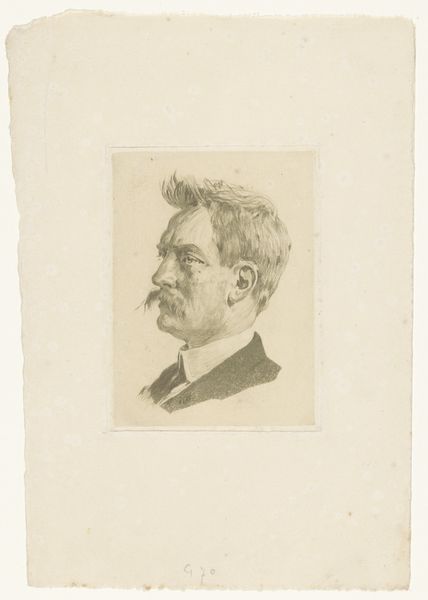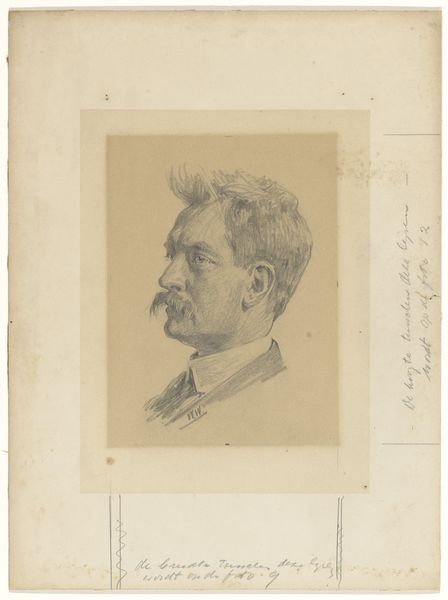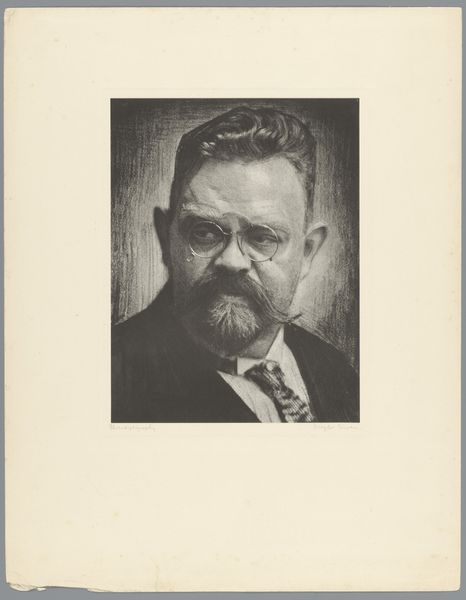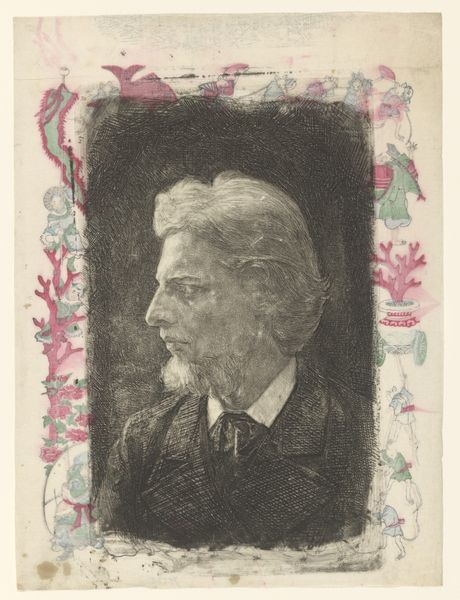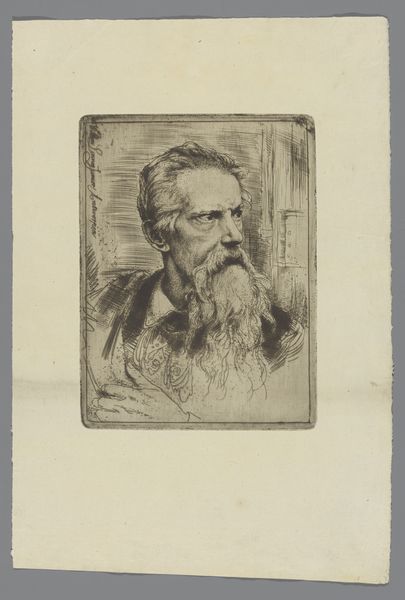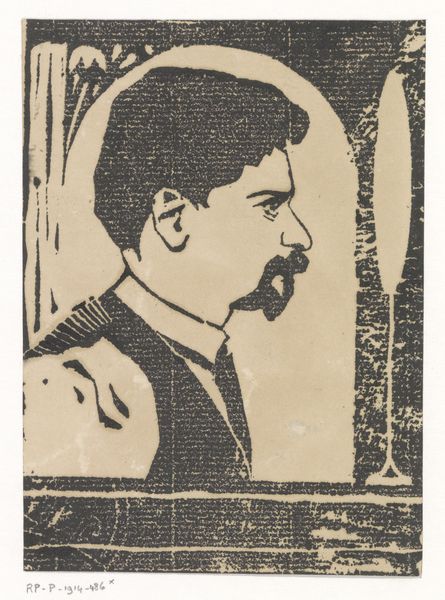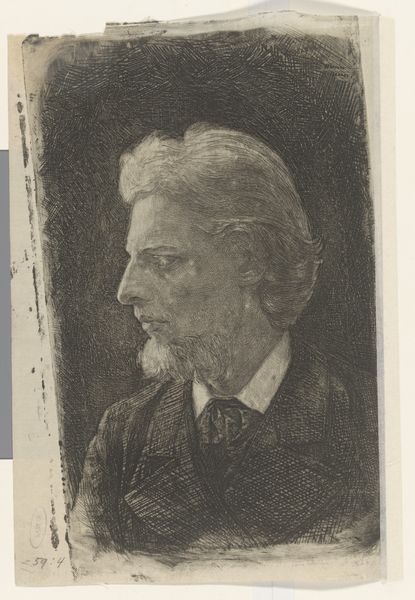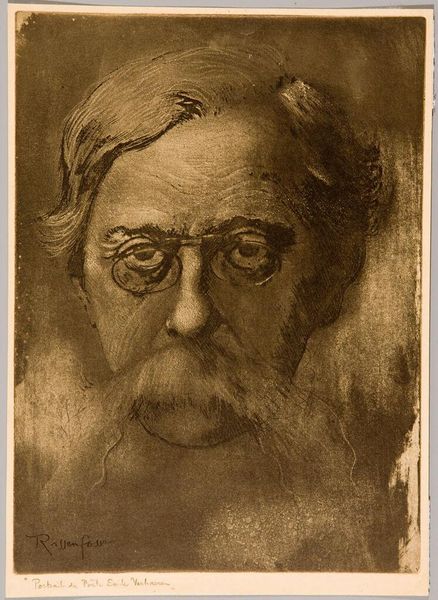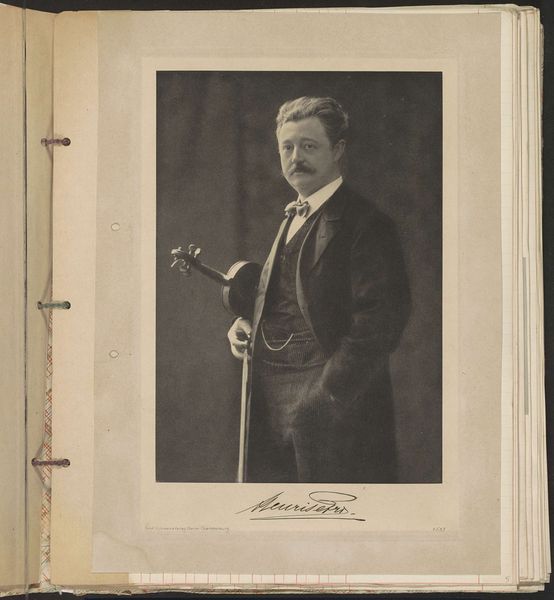
print, graphite, engraving
#
portrait
# print
#
figuration
#
expressionism
#
line
#
graphite
#
portrait drawing
#
engraving
#
modernism
Dimensions: height 517 mm, width 387 mm
Copyright: Rijks Museum: Open Domain
Curator: Looking at this powerful image, we have before us "Portret van Otto Barendsen," a print crafted in 1918 by Chris Lebeau. What's your immediate impression? Editor: Striking. The severe lines create an intensity; there's a strong contrast between light and shadow that shapes the figure. I immediately notice the somewhat unsettling gaze of the man. Curator: Indeed, it embodies an expressionist approach. Lebeau created this during a politically turbulent time. Given the socio-political context, the unflinching stare and rigid lines speak to the unease of the era, and perhaps, to Barendsen's own state of mind. Editor: From a formal point of view, the composition directs our attention through the contrasting textures. Look at the hatching work in his coat versus the intricate patterning in the background; it almost feels claustrophobic, further emphasizing his enclosed presence. Curator: That enclosed presence could represent the restraints imposed upon individual expression and liberty prevalent at the time. Lebeau, deeply involved in socialist ideals, often channeled those themes into his artwork. Editor: You know, the meticulous line work and graphic quality point towards a broader modernist aesthetic, stripping down detail to amplify emotional impact. Note the economical use of shadow to suggest the angles of his face—it's almost cubist in its simplification. Curator: It is also a departure from traditional portraiture norms of the time. The very act of depicting him this way challenged prevailing aesthetic standards. He was probably trying to connect with the social fabric and to make art a relevant participant within his era. Editor: I concur that its bold visual statement resonates with that historical imperative. From its severe lines to the sharp delineation of planes, the artwork creates a disquieting image that’s also formally captivating. Curator: It is this interplay between aesthetic and message that makes it such a compelling piece of social commentary. It gives you much food for thought about that historic period and its impact. Editor: Definitely. Lebeau’s focus on composition gives us the intensity, while its engagement provides a snapshot of art's social role. Curator: Very well said.
Comments
No comments
Be the first to comment and join the conversation on the ultimate creative platform.
